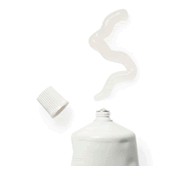- Birth control
- Spermicide and gel
Spermicide and gel

What are spermicides and gels?
“Spermicide” describes a bunch of different creams, films, foams, gels, and suppositories that you insert deep into your vagina before sex to prevent pregnancy. On its own, spermicide provides some pregnancy prevention, but pairing it with another method is way more effective. Some condoms come coated in spermicide, or you can use a separate spermicide along with a condom. There are other methods, like the cervical cap and the diaphragm, that need to be used with spermicide to be effective.
Spermicide contains chemicals that prevent pregnancy in two ways. The first way spermicide works is by stopping sperm from moving normally. The second way is by keeping sperm from getting through your cervix and into your uterus. (Think of your cervix like a doorway between your vagina and your uterus.) In order for spermicide to work correctly, you have to insert it deep into your vagina, so that it actually covers your cervix.
Phexxi is a birth control gel that is similar to over-the-counter spermicide but is more effective. Phexxi is only available by prescription.
Quick Facts
-
Effectiveness
Spermicide on its own, without a barrier method like a diaphragm or condom, is pretty effective the way most people use it. Prescription-only vaginal gel is more effective than over-the-counter spermicide.
Perfect use: 84% to 93% effective
Typical use: 79% to 86% effective
What are perfect use and typical use?
-
Hormones
Spermicide and gel are hormone-free.
-
Side effects
Irritation or urinary tract infections are possible.
-
Cost
Anywhere from $0 to $32 per dose.
-
STI protection
Spermicide and gel doesn’t protect against STIs.
-
Ongoing effort
You have to apply a dose of spermicide before each time you have penis-in-vagina sex.
Types of spermicide and gel

Prescription vaginal gel (Phexxi)
Phexxi is similar to spermicide in that it’s a gel that goes into the vagina before sex to prevent pregnancy. It works by maintaining the low pH of your vagina, which interferes with how sperm move. Phexxi is more effective when used on its own than over-the-counter spermicide is when it’s used on it’s own. Phexxi can also be used with any other method of birth control (except the ring) for extra pregnancy prevention.

Over-the-counter spermicide
Most spermicides are sold over the counter, which means you don’t need a prescription to get them. Over-the-counter spermicides contain a chemical called nonoxynol-9. They come in different forms—they can be gels, films, foams, suppositories, or creams. Popular over-the-counter spermicide brands include VCF and Options Gynol II.
If you’re a diaphragm or cervical cap user, using spermicide as well is key to effective pregnancy prevention. On its own, over-the-counter spermicide does offer some pregnancy prevention, but using it with another method is much more effective.

We can help you find an in person provider or online birth control delivery service.
find health care